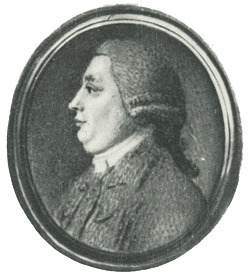John Camillus Hone facts for kids
Quick facts for kids
John Camillus Hone
|
|
|---|---|

Portrait of Hone, possibly by Nathaniel Hone the Elder
|
|
| Born | 1759 Frith Street, London, England
|
| Died | 23 May 1836 (aged 76–77) Summerhill, Dublin, Ireland
|
John Camillus Hone (born in 1759, died in 1836) was an English artist. He was famous for painting tiny, detailed pictures called miniatures. These small portraits were very popular during his time.
Contents
About John Camillus Hone
His Early Life and Family
John Camillus Hone was born in London, England, in 1759. His parents were Nathaniel and Mary Hone. His father, Nathaniel Hone, was also a well-known artist who painted miniatures. He taught John how to paint when he was young.
John was one of ten children in his family, but only five of them lived to be adults. His brother, Horace, also became an artist, just like their father. People believe that John Camillus Hone was the model for his father's painting called "The Piping Boy." In that painting, he would have been about nine years old.
His Family Life
In October 1807, John Camillus Hone married his cousin, Abigail Hone. He passed away on May 23, 1836, at his home in Summerhill, Dublin, Ireland. Abigail lived for many more years, reportedly reaching the age of 103 or even 105.
His Artistic Journey
John Camillus Hone first showed his artwork to the public in 1775. He exhibited a painting called "Portrait of a Lady" at the Free Society in London. The next year, he showed two more paintings: "St Francis" and "The Spartan Boy." He continued to exhibit his art, including at the Royal Academy from 1776 to 1780.
Later, he moved to the East Indies (a region in Asia), where he continued to be a successful artist.
Moving to Dublin and New Career
In 1790, John Camillus Hone moved to Dublin, Ireland. There, he was given an important job at the Stamp Office by the Lord Lieutenant, who was a high-ranking official. His new role was "Engraver of Dies," which meant he was in charge of creating the designs used for official stamps.
After taking this job, it seems he mostly stopped painting. He only exhibited his art one more time in 1809. At that exhibition on Hawkins Street, he showed three oil portraits.

